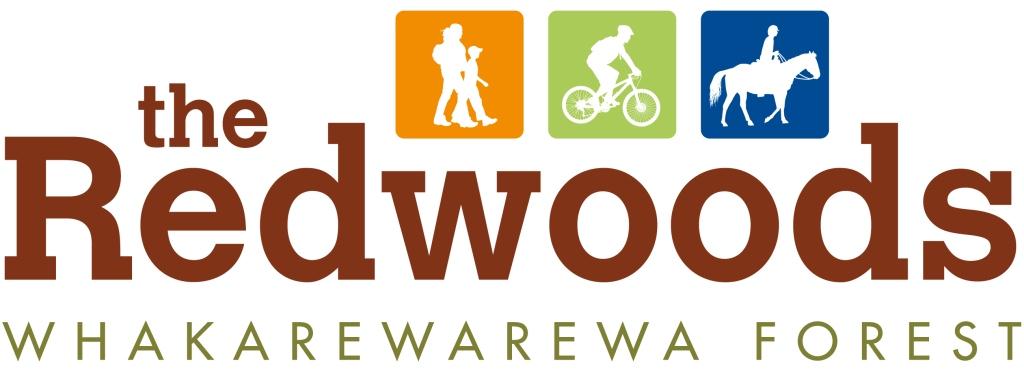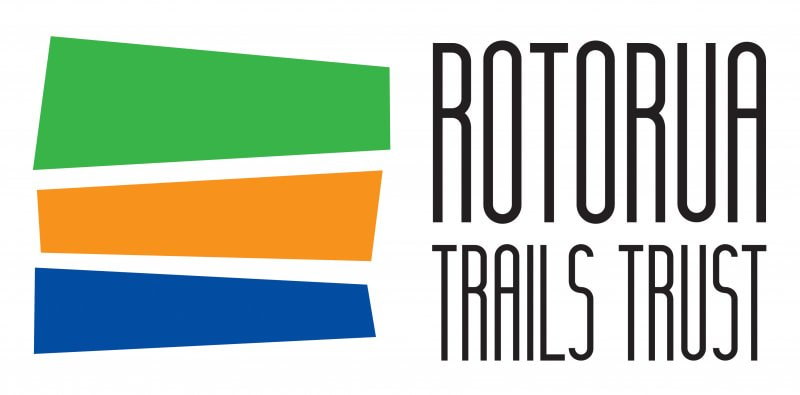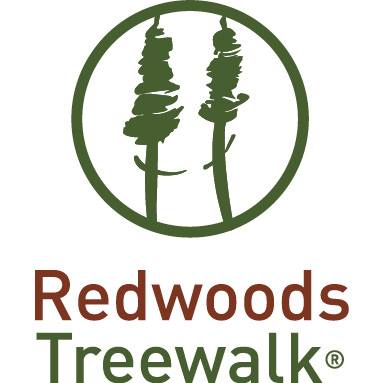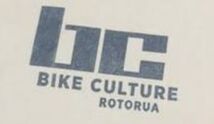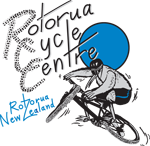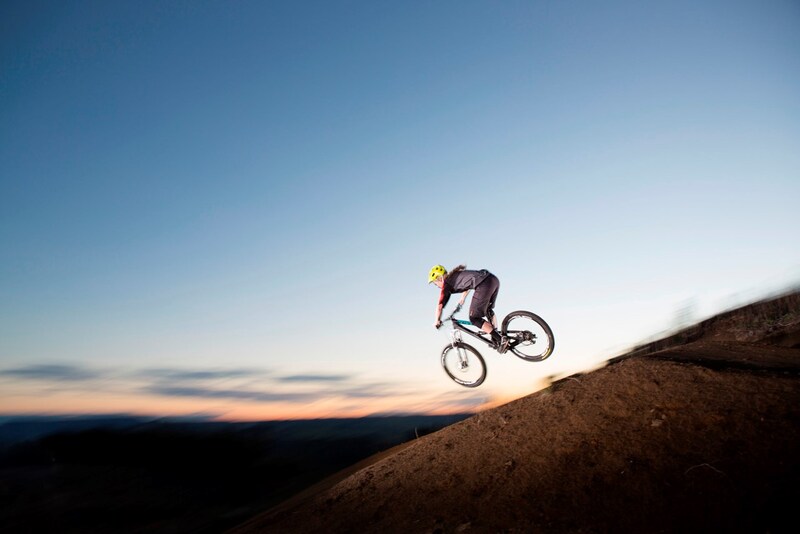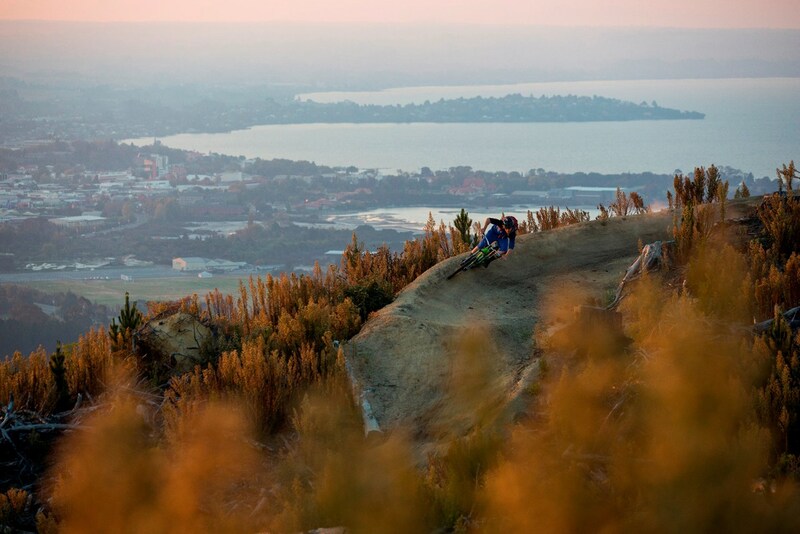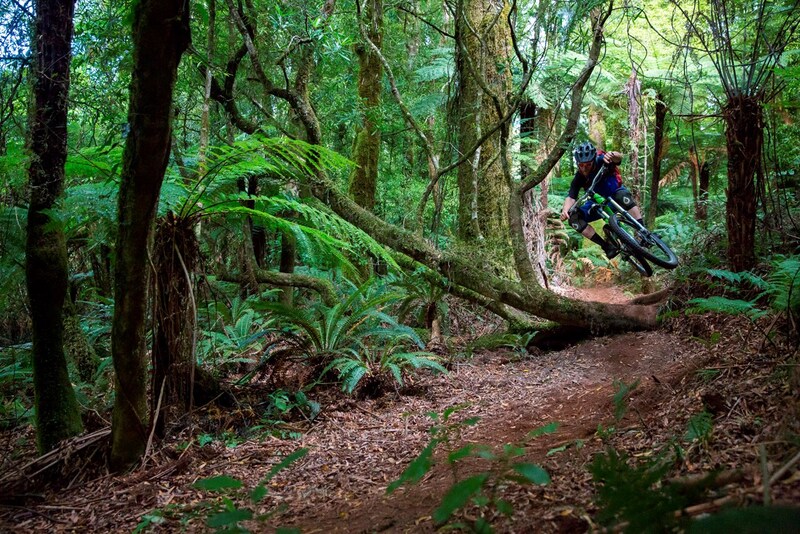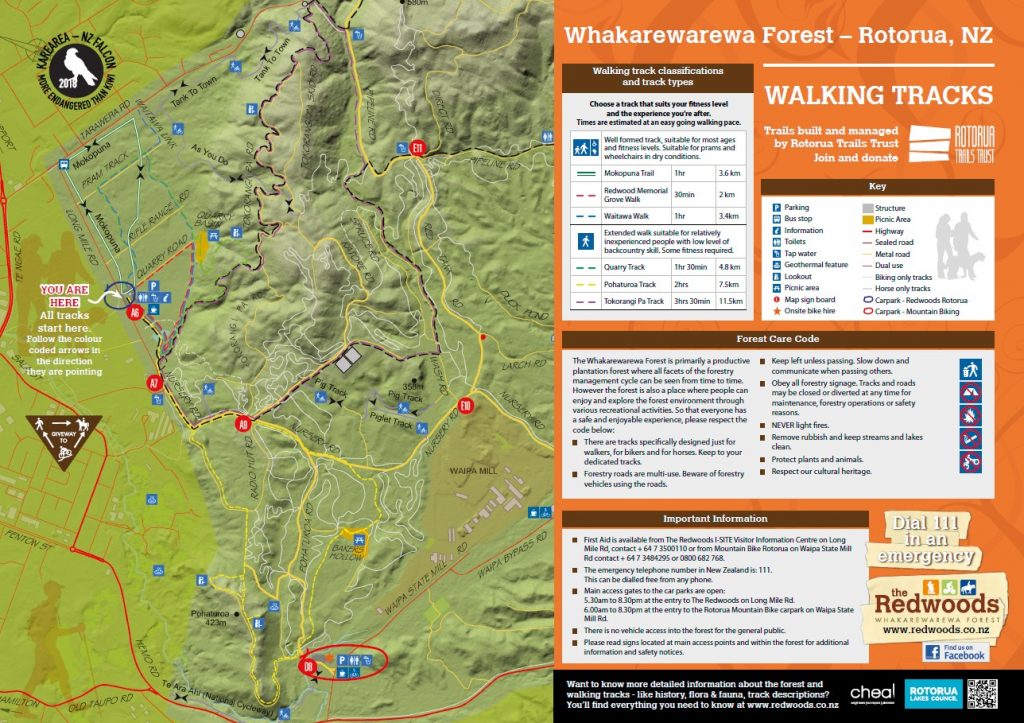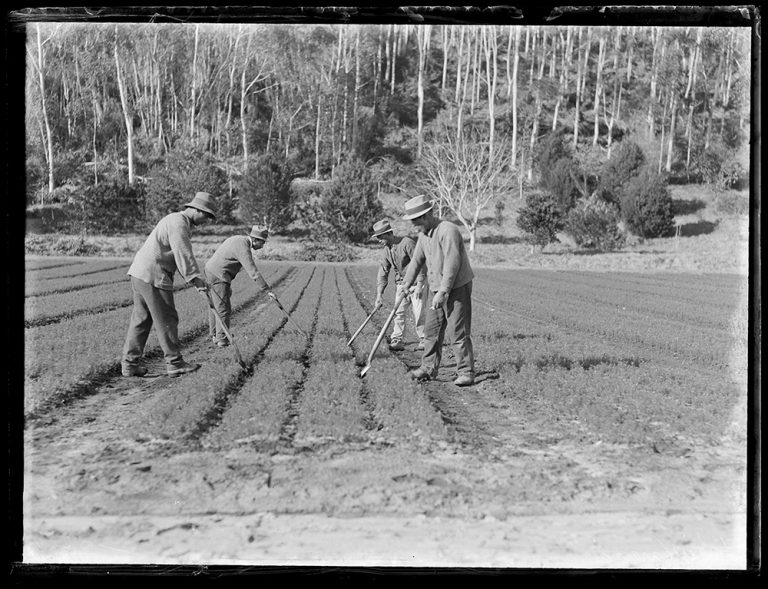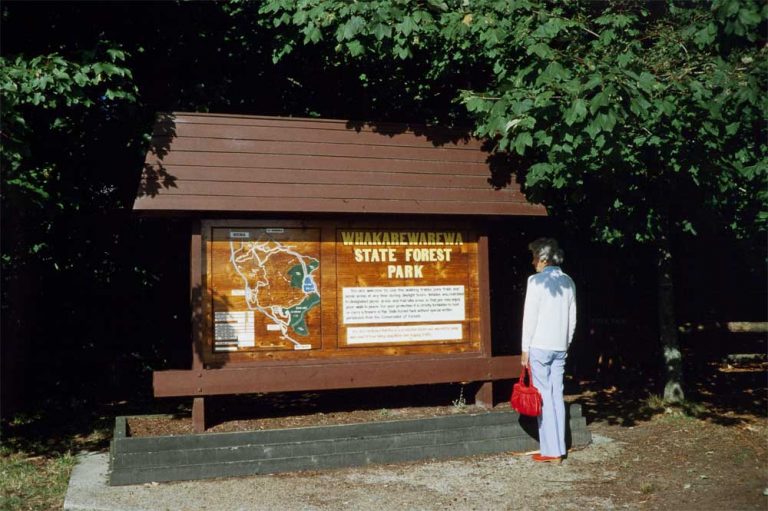Whakarewarewa & Tokorangi Forests
|
Just minutes from Lake Ōkāreka a beautiful forest awaits you.
Known to locals as ‘The Redwoods’, the 5600ha Whakarewarewa Forest is a perfect playground for horse riders, mountain bikers, walkers and hikers with magnificent stands of towering native and exotic trees. Amateurs to experts from across the country and around the globe agree mountain biking doesn’t come any better, with free access to a plethora of scenic, continually evolving forest trails. The unbeatable blend of riding surfaces, topography and scenery cater for all skill and fitness levels with more than 70 trails ranging from beginner through to expert levels. For those on foot, there are an array of hiking and running trails from short easy circuits to full day hikes which start off in the majestic Redwood Grove. Going further afield will take hikers through a diverse range of native plants and exotic trees, leading to spectacular views of Rotorua. The Rotorua region has over 100,000 hectares of native bush and planted forest used daily for commercial and recreational purposes. For more information, maps and guide books, visit the Redwoods Visitor Centre on Long Mile Road. |
Mountain Biking Trails
|
One of the oldest mountain bike networks in the country, with master crafted trails, unbeatable riding surfaces, well draining volcanic soils, varying topography and fantastic scenery. It is no wonder Rotorua is renowned among mountain bikers as a premier riding destination.
With around 130km of continually evolving trails, there is something to cater for all levels of rider, from beginners and family groups through to experts looking for extreme action. Be A Safe Mountain Biker
Rotorua Mountain Bike Club was formed to advocate for and develop the sport of mountain biking in the Rotorua area. Its work involves maintaining and developing trails, athlete development, running events and cycle advocacy. Trail Grading Key
|
Whakarewarewa Walking Tracks
Redwood Memorial Grove Track
2.0km 30 minutes
On this popular track you can meander through the breathtaking Californian Redwoods (Sequoia sempervirens) which were planted in 1901. These towering trees stand at approximately 219 feet (67 metres) tall and create a wonderful shelter, along with the under planted European Larch, for a diverse range of native plants and birds. Another feature of this track is the boardwalk, which takes you across the old thermal pond, home to a variety of exotic aquatic plant life. Admire these magnificent trees which are dedicated to the memory of the men of the New Zealand Forest Service who died in the two World Wars.
Waitawa Walk
3.4km 1 hour
This track takes you on an extension of the Redwood Track through the breathtaking Redwoods into a magnificent stand of Douglas fir. Discover the famous New Zealand Silver fern and the giant Mamaku ferns. Join the nature trail where many of the trees and plants are identified along the way.
Quarry Lookout Track
4.8km 1hr 30mins
The Quarry Lookout Track is a variation on the Waitawa walk and ventures a bit further into the forest. A stroll through the Redwoods leads you to a short climb through mature Douglas fir, European Larch, Walnut and various species of Eucalypts. The lookout point above the old rhyolite quarry gives a wonderful view over the Redwood Grove, out to Lake Rotorua and the main city centre.
Once you have descended the steps into the Quarry basin you can follow Quarry Rd back down to the Redwoods car park to shorten the walk to about one hour or keep following the green arrows to continue for the full walk.
Tokorangi Pa Track
11.5km 3 hours 30 minutes
The Tokorangi Pa Track takes you through the tranquil Redwoods before a steady climb eastward to 500 metres above sea level.
This is a very beautiful walk with views of Mt Ngongotaha, Rotorua City, the lake, airport and countryside.
The trip through Douglas fir, European Larch, Walnut and various Eucalypts leads to the site of an ancient Maori pa
(fortified village). This was once a small Maori village although nothing remains today. The track then continues down to the valley floor along ‘The Wash’. Watch for bikes on the Water Reservoir and Lynmore Link sections as these are dual-use tracks. ‘Cardiac Steps’ brings you back up past the wastewater treatment ponds to return via Katore and Nursery Roads
Pohaturoa Track
7.5km 2hrs
Setting off towards the western side of Whakarewarewa, this track goes over quite varied terrain and takes in different aspects of the forest, initially passing through The Redwoods and then through stands of mature Radiata pine, Mexican pine, Japanese larch and Douglas fir. Once through the Redwood Grove you will take a short sealed road section up Nursery Hill before heading back into the forest.
2.0km 30 minutes
On this popular track you can meander through the breathtaking Californian Redwoods (Sequoia sempervirens) which were planted in 1901. These towering trees stand at approximately 219 feet (67 metres) tall and create a wonderful shelter, along with the under planted European Larch, for a diverse range of native plants and birds. Another feature of this track is the boardwalk, which takes you across the old thermal pond, home to a variety of exotic aquatic plant life. Admire these magnificent trees which are dedicated to the memory of the men of the New Zealand Forest Service who died in the two World Wars.
Waitawa Walk
3.4km 1 hour
This track takes you on an extension of the Redwood Track through the breathtaking Redwoods into a magnificent stand of Douglas fir. Discover the famous New Zealand Silver fern and the giant Mamaku ferns. Join the nature trail where many of the trees and plants are identified along the way.
Quarry Lookout Track
4.8km 1hr 30mins
The Quarry Lookout Track is a variation on the Waitawa walk and ventures a bit further into the forest. A stroll through the Redwoods leads you to a short climb through mature Douglas fir, European Larch, Walnut and various species of Eucalypts. The lookout point above the old rhyolite quarry gives a wonderful view over the Redwood Grove, out to Lake Rotorua and the main city centre.
Once you have descended the steps into the Quarry basin you can follow Quarry Rd back down to the Redwoods car park to shorten the walk to about one hour or keep following the green arrows to continue for the full walk.
Tokorangi Pa Track
11.5km 3 hours 30 minutes
The Tokorangi Pa Track takes you through the tranquil Redwoods before a steady climb eastward to 500 metres above sea level.
This is a very beautiful walk with views of Mt Ngongotaha, Rotorua City, the lake, airport and countryside.
The trip through Douglas fir, European Larch, Walnut and various Eucalypts leads to the site of an ancient Maori pa
(fortified village). This was once a small Maori village although nothing remains today. The track then continues down to the valley floor along ‘The Wash’. Watch for bikes on the Water Reservoir and Lynmore Link sections as these are dual-use tracks. ‘Cardiac Steps’ brings you back up past the wastewater treatment ponds to return via Katore and Nursery Roads
Pohaturoa Track
7.5km 2hrs
Setting off towards the western side of Whakarewarewa, this track goes over quite varied terrain and takes in different aspects of the forest, initially passing through The Redwoods and then through stands of mature Radiata pine, Mexican pine, Japanese larch and Douglas fir. Once through the Redwood Grove you will take a short sealed road section up Nursery Hill before heading back into the forest.
| Whakarewarewa Walking Trail Map | |
| File Size: | 3317 kb |
| File Type: | |
The History – Te Tāhuhu Kōrero
Up until the 1880s the Tokorangi and Whakarewarewa forests were home to Māori settlements and cultivations for both Ngāti Whakaue and Tūhourangi.
For both iwi the forests now referred to as Tokorangi, Whakarewarewa, Waipa and highlands were important food gathering forests. Tokorangi was a stronghold of Ngāti Whakaue, where they worked the lands and hunted in the forests. Whakarewarewa was used by both iwi.
Tūhourangi harvested tawa berries at Moerangi, Kākāpiko and Pākaraka. Ducks, raupō (bulrush) and kōkōwai were also procured in these areas, and rāhui were annually set up and adhered to by other iwi and hapū. In addition, Waipā was an important source of timber for Ngāti Wāhiao.
Ngāti Whakaue and Tūhourangi respectfully acknowledge each other’s mana whenua in the area, based on traditional relationships through shared whakapapa ties and on common historical associations relevant to these lands over many generations.
Around the advent of the Native Land Court in the 1880s, the NZ government began an attempt to replace the native forests that were being cleared rapidly by European settlers for farmland and timber. By the late 19th century, 7 million hectares of native forest was gone.
The government purchased blocks of land off the Maori landowners in 1896 and knowing New Zealand native trees grow very slowly (200-300 years to mature) a government nursery was set up to determine the best exotic species most suited for commercial harvesting in the Bay of Plenty.
For both iwi the forests now referred to as Tokorangi, Whakarewarewa, Waipa and highlands were important food gathering forests. Tokorangi was a stronghold of Ngāti Whakaue, where they worked the lands and hunted in the forests. Whakarewarewa was used by both iwi.
Tūhourangi harvested tawa berries at Moerangi, Kākāpiko and Pākaraka. Ducks, raupō (bulrush) and kōkōwai were also procured in these areas, and rāhui were annually set up and adhered to by other iwi and hapū. In addition, Waipā was an important source of timber for Ngāti Wāhiao.
Ngāti Whakaue and Tūhourangi respectfully acknowledge each other’s mana whenua in the area, based on traditional relationships through shared whakapapa ties and on common historical associations relevant to these lands over many generations.
Around the advent of the Native Land Court in the 1880s, the NZ government began an attempt to replace the native forests that were being cleared rapidly by European settlers for farmland and timber. By the late 19th century, 7 million hectares of native forest was gone.
The government purchased blocks of land off the Maori landowners in 1896 and knowing New Zealand native trees grow very slowly (200-300 years to mature) a government nursery was set up to determine the best exotic species most suited for commercial harvesting in the Bay of Plenty.
Seeds were imported on sailing ships from around the world and the first of 170 different species of trees were planted in a trial area by the NZ Forest Service and prison labour. As part of a Government labour scheme, temporary prison camps were built in isolated places and the inmates put to work in the forest. Two camps were set up, one in the Waipa Valley, and one on the site of the present Lake Rotokakahi picnic area.
Trail plantings continued for many years and in 1901, the first Californian Coast Redwoods were planted. Native to the North West coast of America, the botanical name ‘sequoia semperviren’ was given to the Californian Redwood by a German botanist to honour Cherokee Chief Seqoyah. The common name Redwood comes from the tree’s heartwood, which is a light cherry colour and can darken to nut-brown when exposed to air. The largest Redwood in the area is approximately 72 metres tall and 169 centimetres in diameter. In its natural habitat of California, these Redwoods grow as tall as 110 metres and the average lifespan is 600 years. However, they can survive for over 2000 years. The results of the planting were mixed – of the original 12 hectares, only six hectares survives today.
By 1915, there was the first small harvest of timber, which was used for firewood. Later on, mine props were cut for the Waihi gold and the Huntly coalmines.
Trail plantings continued for many years and in 1901, the first Californian Coast Redwoods were planted. Native to the North West coast of America, the botanical name ‘sequoia semperviren’ was given to the Californian Redwood by a German botanist to honour Cherokee Chief Seqoyah. The common name Redwood comes from the tree’s heartwood, which is a light cherry colour and can darken to nut-brown when exposed to air. The largest Redwood in the area is approximately 72 metres tall and 169 centimetres in diameter. In its natural habitat of California, these Redwoods grow as tall as 110 metres and the average lifespan is 600 years. However, they can survive for over 2000 years. The results of the planting were mixed – of the original 12 hectares, only six hectares survives today.
By 1915, there was the first small harvest of timber, which was used for firewood. Later on, mine props were cut for the Waihi gold and the Huntly coalmines.
Men cultivating crops on the edge of the Whakarewarewa State Forest, New Zealand Herald
Auckland Libraries Heritage Collections 1370-125-2
Following the First World War, in 1925, the grove of now maturing Redwood trees was declared a memorial to those NZ Forest Service members who died in the war. This happened again in 1947, following the Second World War.
While the first walking track was developed in 1939, it was not until the 1970s that the Redwoods were open to the public. An informal move to enable people to enjoy the forest was made when the Redwoods Memorial Grove walking track and old prison camp site at Lake Rotokakahi opened to the public for recreation.
In October of 1975, the forest area was officially designated as a “Forest park” under the Forests Act and this was quickly followed by a forestry visitor centre opening in 1978. The next decade also saw a number of new walking tracks developed, including the Waitawa Walk, which was developed and opened as an identification trail.
In 1987, the “Forest Park” designation was removed following the restructuring of the NZ Forest Service and in 1988 the Government decided to sell off Crown forestry assets. Because the area was widely recognised for its importance to the Rotorua district for historical, recreational and aesthetic reasons and had a high level of public use, the forest was given special status to ensure these issues were considered by the new forestry owners and free recreational access was retained.
While the first walking track was developed in 1939, it was not until the 1970s that the Redwoods were open to the public. An informal move to enable people to enjoy the forest was made when the Redwoods Memorial Grove walking track and old prison camp site at Lake Rotokakahi opened to the public for recreation.
In October of 1975, the forest area was officially designated as a “Forest park” under the Forests Act and this was quickly followed by a forestry visitor centre opening in 1978. The next decade also saw a number of new walking tracks developed, including the Waitawa Walk, which was developed and opened as an identification trail.
In 1987, the “Forest Park” designation was removed following the restructuring of the NZ Forest Service and in 1988 the Government decided to sell off Crown forestry assets. Because the area was widely recognised for its importance to the Rotorua district for historical, recreational and aesthetic reasons and had a high level of public use, the forest was given special status to ensure these issues were considered by the new forestry owners and free recreational access was retained.
Whakarewarewa State Forest walk in Rotorua, Young, Eric W. (1980-1989)
Auckland Libraries Heritage Collections 1021-143
he area is now synonymous with mountain biking, but this might not have been the case if it wasn’t for local mountain bike enthusiast Fred Christensen and a bunch of community service workers who built the first trails in 1993. New tracks would continue to be developed by Fred and others as the sport grew in popularity.
The forest management changed hands again in 1996 when the Forestry Corporation of New Zealand was sold to Fletcher Challenge Forests, who took over management of the Whakarewarewa forest, and management of The Redwoods on behalf of the Rotorua District Council.
In 2003, Fletcher Challenge Forests split its forest assets and sold them off to national and international companies. As a result, management of The Redwoods area was now passed on to the new forestry management company, Kaingaroa Timberlands. Kaingaroa Timberlands relinquished their management agreement of The Redwoods in May of 2006 and the Rotorua District Council took over management of the public reserve area.
By the early 2000s mountain biking was a very popular sport and tracks were popping up all over the forest. So in 2004 a policy was developed to govern mountain bike access and any track building. The outcomes of which was to increase communication and co-operation between the forest managers and mountain bikers. The Rotorua Mountain Bike Club became the key point of contact and most tracks are now developed and maintained by the club or volunteer track adoptees.
The land on which the Whakarewarewa Forest and Tokorangi Forest (Redwoods) sits was returned to Maori ownership in July of 2009 as part of a Treaty of Waitangi settlement. The Redwoods continued to be managed by The Rotorua District Council and the Whakarewarewa Forest continued to be managed by Kaingaroa Timberlands. By 2010, a working group comprised of representatives from the Council, Kaingaroa Timberlands, Iwi and CNI Iwi Holdings (the land management company) was set-up to focus on the recreational management in the forests. In October of 2016, the ‘Recreational Use of the Tokorangi and Whakarewarewa Forests Policy’ was agreed on by the various parties. The policy puts in place mechanisms to manage the recreational activity to ensure that any potential risk to forest users can be managed alongside forestry activity. This means any activity other than general access by foot, bike or horse requires a permit.
In 2014, new facilities and access to the forest were built at the Waipa entrance and in 2015 the Tree Walk was opened in the Redwoods. The eco-friendly Tree Walk consists of 21 suspension bridges up to 12 metres off the ground.
Source: https://visiontoaction.nz/projects-home/forest-development/the-history-te-tahuhu-korero/
The forest management changed hands again in 1996 when the Forestry Corporation of New Zealand was sold to Fletcher Challenge Forests, who took over management of the Whakarewarewa forest, and management of The Redwoods on behalf of the Rotorua District Council.
In 2003, Fletcher Challenge Forests split its forest assets and sold them off to national and international companies. As a result, management of The Redwoods area was now passed on to the new forestry management company, Kaingaroa Timberlands. Kaingaroa Timberlands relinquished their management agreement of The Redwoods in May of 2006 and the Rotorua District Council took over management of the public reserve area.
By the early 2000s mountain biking was a very popular sport and tracks were popping up all over the forest. So in 2004 a policy was developed to govern mountain bike access and any track building. The outcomes of which was to increase communication and co-operation between the forest managers and mountain bikers. The Rotorua Mountain Bike Club became the key point of contact and most tracks are now developed and maintained by the club or volunteer track adoptees.
The land on which the Whakarewarewa Forest and Tokorangi Forest (Redwoods) sits was returned to Maori ownership in July of 2009 as part of a Treaty of Waitangi settlement. The Redwoods continued to be managed by The Rotorua District Council and the Whakarewarewa Forest continued to be managed by Kaingaroa Timberlands. By 2010, a working group comprised of representatives from the Council, Kaingaroa Timberlands, Iwi and CNI Iwi Holdings (the land management company) was set-up to focus on the recreational management in the forests. In October of 2016, the ‘Recreational Use of the Tokorangi and Whakarewarewa Forests Policy’ was agreed on by the various parties. The policy puts in place mechanisms to manage the recreational activity to ensure that any potential risk to forest users can be managed alongside forestry activity. This means any activity other than general access by foot, bike or horse requires a permit.
In 2014, new facilities and access to the forest were built at the Waipa entrance and in 2015 the Tree Walk was opened in the Redwoods. The eco-friendly Tree Walk consists of 21 suspension bridges up to 12 metres off the ground.
Source: https://visiontoaction.nz/projects-home/forest-development/the-history-te-tahuhu-korero/

